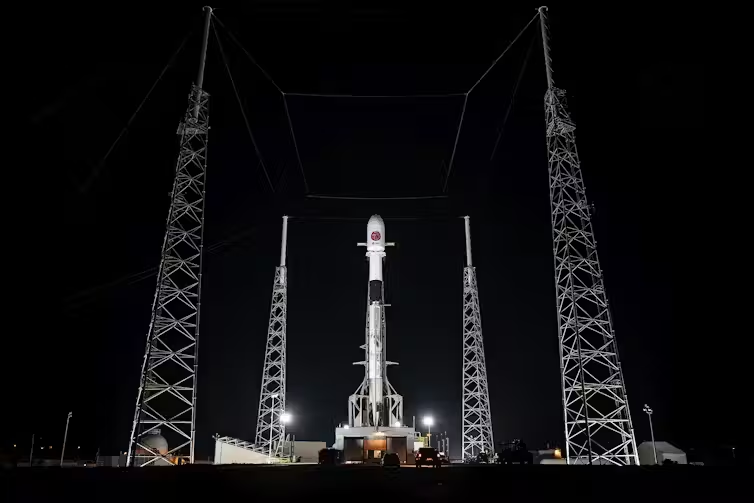6 Minutes
Reconsidering the Universe’s Origin: Beyond the Big Bang Model
For decades, the Big Bang theory has been the backbone of modern cosmology, describing the Universe’s origin as an explosive event when space, time, and matter all emerged abruptly from a single point. However, a groundbreaking study published in Physical Review D introduces a bold new perspective: what if the Big Bang was not the Universe’s true beginning, but rather a transitional event—a remarkable outcome of a prior cosmic collapse?
Background: The Big Bang and Its Unanswered Questions
The standard cosmological model, which combines the Big Bang and cosmic inflation (a fleeting period of extremely rapid expansion just after the Universe’s birth), has achieved significant success. It explains cosmic microwave background radiation, the large-scale structure of the Universe, and the abundance of light elements. Yet, fundamental puzzles linger. Chief among them is the singularity problem: the Big Bang model suggests the Universe began from a near-infinitely dense point where the known laws of physics cease to function.
To address inconsistencies, physicists have invoked inflation—driven by an unknown quantum field—and dark energy, both hypothetical entities with only indirect evidence supporting their existence. As a result, questions such as what preceded the Big Bang or why the Universe is so homogeneous, flat, and vast remain open.
The Black Hole Universe Hypothesis: A Radical but Familiar Alternative
A team of physicists now proposes a strikingly different idea: instead of originating from nothing, our Universe may have formed from the gravitational collapse of a massive region, similar to how stars form black holes. This scenario leads to the concept of a black hole universe, in which the so-called Big Bang is actually a bounce—a rapid expansion that follows a gravitational crunch, avoiding the initial singularity entirely.
This concept is rooted in well-established physics. In the familiar example of stellar death, stars undergo collapse to become black holes. These objects are among the most thoroughly studied in astrophysics, but the region beyond a black hole’s event horizon remains obscured and mysterious.
Classical work by physicists like Roger Penrose and Stephen Hawking showed that gravitational collapse must lead to a singularity. Their findings, rewarded with Nobel recognition, formed the foundation for our conventional understanding. However, these theorems rely on classical physics, neglecting the quantum effects pivotal at extreme densities.
Quantum Physics Changes the Cosmic Story
Recent calculations now reveal that quantum mechanics—the laws governing subatomic particles—can prevent the complete collapse to a singularity. A key player is the quantum exclusion principle, which states that two identical fermions (particles like electrons, neutrons, or protons) cannot occupy the same quantum state. This rule forbids matter from compressing infinitely, making a total collapse impossible under certain conditions.
According to the new model, as matter compresses inside a gigantic black hole, quantum effects halt and reverse the collapse, inducing a powerful bounce. The result is a rebounding cosmos: an explosive transition remarkably similar to the start described by the Big Bang, but arising from rebound rather than creation ex nihilo.
Testable Predictions and Observational Opportunities
A unique advantage of the black hole universe theory lies in its predictive potential. It forecasts slight positive spatial curvature—meaning that space is minutely curved, akin to the surface of a sphere, rather than being perfectly flat. This curvature directly results from the initial conditions that triggered the collapse.
Ongoing astronomical observations, including the ESA’s Euclid mission launched to map the geometry of the Universe, are hunting for evidence of this curvature. Confirming a small, positive spatial curvature could lend strong support to the bounce model.
The new theory also offers insights into inflation and dark energy—the two enigmatic phases of accelerated cosmic expansion. Rather than invoking speculative quantum fields, it explains both phenomena as natural consequences of the dynamics of the bounce itself, entirely within the framework of general relativity and quantum mechanics.

Implications for Dark Matter, Black Holes, and Galaxy Evolution
Beyond redefining the Universe’s earliest moments, the black hole universe framework could answer longstanding mysteries in astrophysics. For example, the origin of supermassive black holes, found at the centers of galaxies, remains unclear. The bounce model suggests some may be primordial—survivors from the pre-bounce phase.
Likewise, the theory may assist in pinpointing the nature of dark matter, a critical but elusive component shaping galaxy formation and rotation curves. Upcoming missions such as Arrakhis and advances in the study of stellar halos and satellite galaxies (the smaller companions to major galaxies, often detectable only with sensitive instruments) could reveal traces of compact relic objects—black holes or other dense remnants—from before the bounce.
These investigations are at the forefront of dark matter research and the quest to map the hierarchical assembly of cosmic structures.
Our Place in a Larger Cosmic Cycle
Perhaps the most profound implication of the black hole universe theory is a radical reframing of humanity’s cosmological context. According to this model, our observable Universe would exist wholly within the interior of a black hole belonging to a much larger “parent” universe. Rather than witnessing the absolute beginning of all things, we are participants in an ongoing, cyclical process—one possibly repeated countless times across cosmic epochs.
This idea challenges the notion of uniqueness—a notion once held by proponents of an Earth-centered universe prior to the Copernican revolution. Today, as Galileo’s insights dethroned Earth from its central pedestal, this theory places our cosmic history as one chapter in a vast and self-renewing multiversal sequence, governed by the interplay between gravity and quantum phenomena.
Future Prospects: Observations and Technologies
The future promises deeper cosmic insights as next-generation space missions and observatories seek new data. Telescopes like Euclid and the Arrakhis mission are poised to test these innovative predictions. By analyzing cosmic microwave background anisotropies, large-scale structure, halo features, and relic compact objects, scientists may soon validate—or refute—the notion of a bounce-driven universe.
Furthermore, bridging general relativity with quantum mechanics in cosmological contexts remains an active area of theoretical research, with the potential not just to describe the past, but also to inform our understanding of cosmic fate.
Conclusion
The black hole universe hypothesis offers a daring and testable alternative to the standard Big Bang paradigm. Rooted in established physics and emerging from innovative mathematical solutions, it recasts the Universe’s apparent beginning as a rebound from a gravitational collapse, sidestepping the singularity problem and naturally explaining phases like cosmic inflation and dark energy.
With its rich implications for the nature of space-time, the role of quantum mechanics, and humanity’s place in the cosmos, this theory invites a new era of empirical investigation and philosophical reflection. As upcoming missions and observations probe the Universe’s shape, expansion, and hidden components, we may be on the verge of uncovering not just our past, but also the deeper, cyclical framework of cosmic evolution.
Source: theconversation



Comments